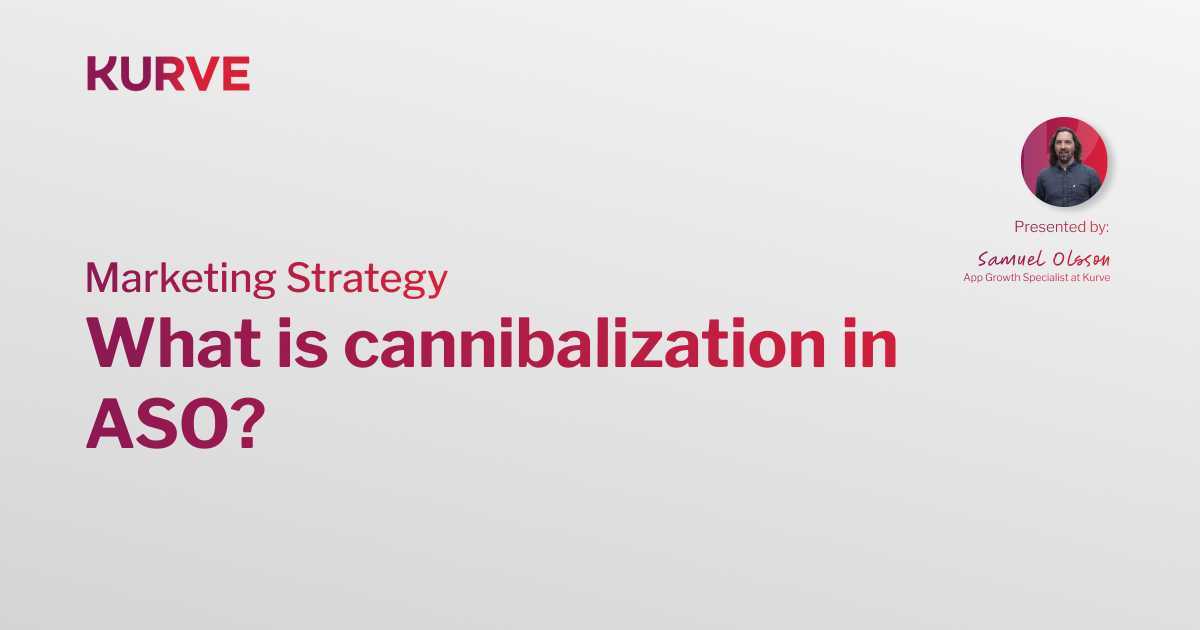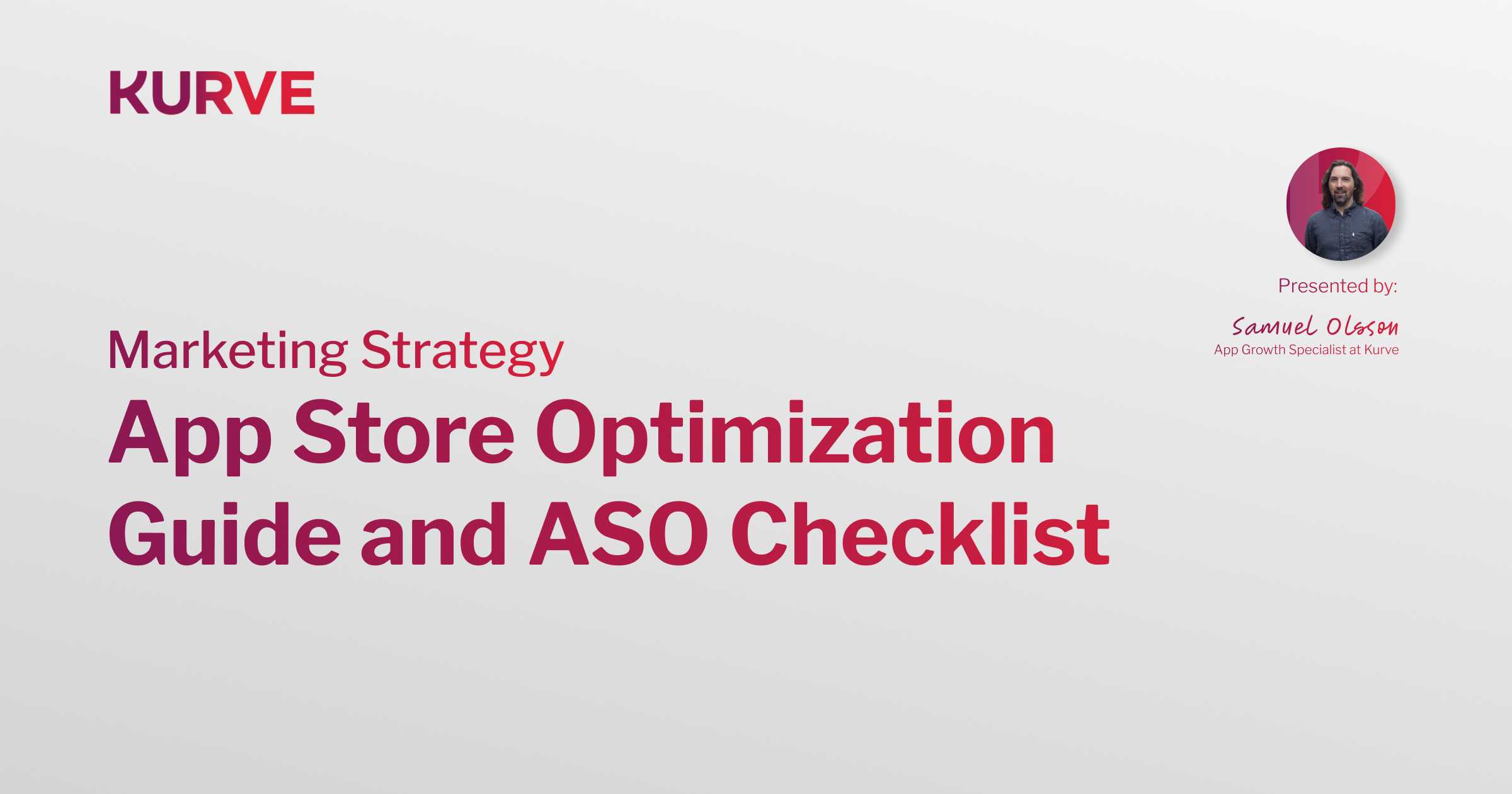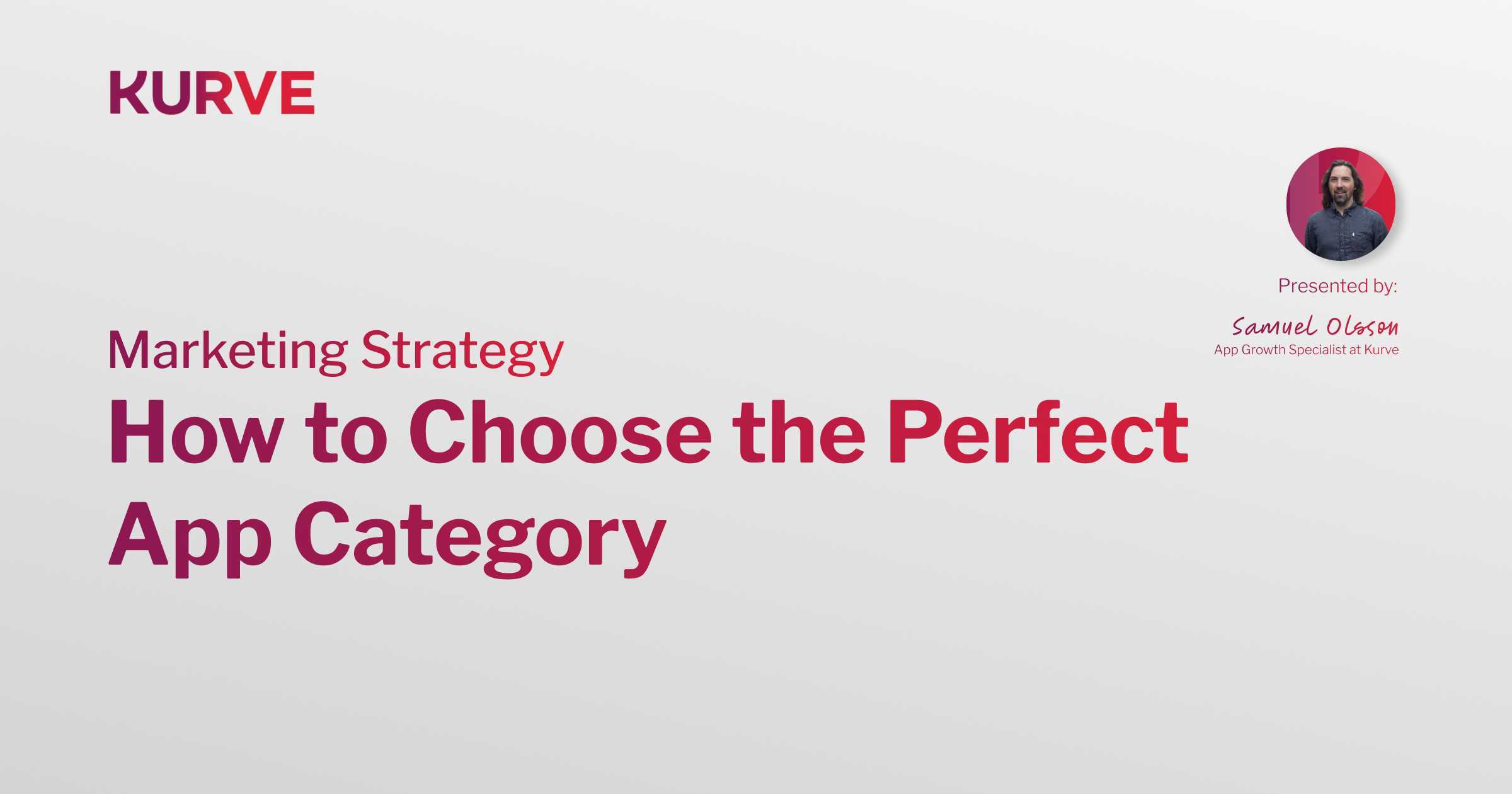The Ultimate Guide to Effective Mobile App Marketing
With most consumers relying on mobile apps for various aspects of their lives, mobile app marketing is a crucial lever for businesses to increase brand awareness, drive user engagement, and generate revenue.
In this guide, we're going deep into app marketing. We'll reveal the strategies that make apps stand out and the benefits of implementing them.
At Kurve, we understand the challenges and opportunities in mobile app marketing. Check out our mobile app services for a deeper dive into our app development and mobile marketing services approach.
What is Mobile App Marketing?

Mobile app marketing is all about getting your company or app noticed. It's promoting mobile applications to reach a wider audience and increase visibility.
The goal is threefold;
- Increase downloads
- Enhance user engagement
- Ensure your app's longevity in a crowded marketplace
It's a blend of strategies combined to grab the attention of potential internet users, draw them in, and keep them engaged. Mobile app marketing is tailored to connect with your audience, ensuring your app becomes a part of their daily digital routine.
Mobile app marketing has grown from basic visibility tactics to comprehensive, multi-platform campaigns. For more insights, see our detailed guide on mobile app growth strategies here.
Why is Mobile App Marketing Important?
Mobile apps have become an integral part of our daily lives.
It means the app market is hyper-competitive but also rich with opportunities. With millions of apps vying for attention, mobile app marketing strategies can turn casual browsers into loyal users. They need to be sharp, focused, and creative. They must align with how people use mobile devices—intuitively and on the go.
It's important to recognize the role of data to understand the intricacies of mobile app marketing. Our guide to mobile analytics shows how data-driven strategies can elevate your app marketing.
Mobile App Marketing Strategies
Let's talk about the strategies to make mobile marketing for your app successful.
Each approach is unique, offering different benefits to help your app stand out.
Explore our extensive discussion in our app promotion guide for more insights on effective app promotion techniques.

App Store Optimization (ASO)
ASO is essential for highlighting your app in the digital marketplace. It's your strategic approach to ensure your app;
- Ranks higher in the App Store search results
- Increases its visibility
- Improves the likelihood of downloads
A core element of ASO is keyword research, which is crucial for discoverability. By identifying the right keywords—relevant and high search volumes within your app's category—you tap into the precise language your target customers and audience are using. This process ensures that your app surfaces for users when they're searching for solutions your app provides.
Want a more in-depth look at app marketing financials? Consider our detailed guide. It will help you grasp the economics of attracting users to your app, a subject as vital as the keyword selection in ASO.
Paid Advertising
Paid advertising plays a crucial role in mobile app marketing.
It's about putting your app in front of potential users interested in what you offer. The success of this strategy hinges on the strength of your ad creatives, i.e., the images, videos, and copy that communicate your app's value proposition. These materials must be compelling enough to grab attention and encourage clicks and downloads.
Measuring the results of your ad campaigns is essential.
By focusing on the right KPIs, you gain insights into what's working and what isn't. This data helps you refine your approach and better invest resources. Our guide to mobile app KPIs will enable you to track performance and adjust your tactics for better outcomes.
Content Marketing
Content marketing is your way of starting meaningful conversations with potential app users.
It's about creating blog posts, videos, and social media content that offers real value without the hard sell of traditional advertising.
A steady flow of quality content helps to build trust and keep your app on their minds. It's like giving them a taste of what your app can do, attracting and engaging them.
As you craft content that informs and delights your audience, you weave a larger narrative about your app's role in their lives. This is only one piece of your broader mobile user acquisition strategy.
Influencer Partnerships
Partnering with influencers can bring a personal touch to your mobile app promotion. These brands are the social media stars and niche experts who have the eyes and ears of your target audience. By teaming up, you leverage their trust and influence to showcase your app to a broader yet targeted audience.
However, only genuine matches resonate. When an influencer's style and followers align with your app's values, their shoutouts feel more like friendly advice than a sales pitch. This authenticity can spark genuine interest and more downloads.
A systematic approach to increasing downloads requires a mix of tactics that feed into one another. Our article on improving app downloads combines various strategies for a comprehensive push for more app installations.
Social Media Marketing
Social media marketing for mobile apps means meeting your audience on their favorite platforms. Facebook offers a vast audience, Instagram captures the imagination with visuals, and TikTok engages with snappy, shareable content.
Building a community on these platforms is where real traction happens. When you respond to comments, share valuable tips and highlight user experiences, you promote your app and create a space for users to connect with your brand.
With app spending crossing $580 billion, pinpointing effective social media strategies has become crucial. By studying current app marketing trends, you'll find actionable insights to craft campaigns that resonate with your target users right where they are most active.
Email Marketing
Email marketing is the direct line you have to communicate with existing users, announce new updates, and promote special offers that incentivize engagement.
What makes email marketing stand out is its ability to feel personal. Using tools to automate emails based on user actions or milestones shows users that you recognize their journey with your app. This tailored approach makes each message more engaging.
Furthermore, understanding your users' preferences is crucial.
Just as we segment and personalize emails for better engagement, A/B testing on the App Store helps pinpoint what works best for attracting users. We've found that simple changes like tweaking the word order in your app's title can lift conversion rates by over 20%.
Our A/B testing guide can help refine your App Store presence and inform your marketing strategy.
Referral Programs
Referral programs are a powerful tool in user acquisition, turning satisfied users into advocates for your mobile app. The idea is simple: reward your current users when they bring in new ones.
This approach can spark significant organic growth as users become motivated to share their positive experiences. It's about creating a win-win scenario where their endorsements act as personal recommendations. It's effective, too, as they're more trustworthy than traditional advertising.
A strong referral program's key is clear communication and absolute transparency. Users need to know what benefits they get and how to claim them when referring someone. When the process is straightforward, and the rewards are appealing, users are more inclined to participate and spread the word.
Search Engine Optimization (SEO)
SEO ensures your website or mobile app pops up where users are looking, often on search engines.
The key is picking keywords that echo what your audience is typing into their search bars. Then, you blend them into content that provides real value. This strategy boosts your app's visibility and engages and educates your users.
Acquiring backlinks from notable industry websites and accumulating positive App Store reviews add layers of credibility to your app. These elements are crucial for SEO. They signal to search algorithms that your app is a trusted resource, which can increase your app's search results. It's more than a numbers game; these endorsements encourage more users to download and try your app for themselves.
Benefits of Mobile App Marketing
Effective mobile app marketing boosts your app's success. It gets your app noticed and loved by more users. But the positive impact doesn’t end there.
Let’s explore the wide-ranging benefits of mobile app marketing.
If you're curious about other parts of the marketing puzzle, like App Store keyword search volume, our guide has you covered.

Increased Visibility and Discoverability
When your app is visible and catches users' attention, it leads to higher download rates.
Effective marketing strategies like ASO and paid advertising can boost your app's visibility in App Stores. With ASO, you optimize your App Store listing using targeted keywords and eye-catching visuals, making it more likely to be seen by users actively searching for your app's features.
Paid advertising puts your app in front of potential users who may not be directly searching for it. By targeting ads to engage the most interested audiences, you drive more downloads and create a larger user base for your app.
Want more valuable insights on boosting app visibility through paid advertising? This guide on optimizing Google app campaigns will help you master the art of effective ad campaigns.
Higher User Acquisition Rates
Higher user acquisition rates fuel the active user base and influence the revenue and app ranking on the App Stores.
You can use various channels and strategies to drive your growth and user acquisition. Some of our most trusted are;
- Using paid advertising to showcase your app to potential users.
- Teaming up with influencers in your app's niche allows you to tap into their follower base, expanding the reach of your app.
- Creating a solid referral program can incite your existing users to act as brand advocates, drawing in more users.
Our App Store optimization experts offer clients bespoke services tailored to enhance your user acquisition efforts.
Improved User Retention
User retention is crucial for the long-term success of any mobile app. Retaining users ensures sustainable revenue streams, higher engagement rates, and the ability to attract new downloads organically.
Creating a seamless and user-friendly experience within the app is key to maintaining interest and loyalty. Make sure your app's interface is minimal, easy to navigate, and responsive to users' expectations.
A comprehensive approach to App Store optimization is vital to improving user retention rates. Our detailed guide provides valuable insights into the costs associated with App Store optimization.
Enhanced User Engagement
An engaged user base spends more time using your app, leading to higher revenue and App Store rankings.
Integrating personalization can enhance user engagement. Tailoring user experiences based on individual preferences makes users feel valued and encourages repeat usage.
Gamification and interactive features help make your app more appealing and fun to use, which can boost user engagement.
Leveraging influencers can also be a valuable avenue for promoting user engagement. At Kurve, we offer influencer marketing services that can introduce your app to a larger audience, enhance brand credibility, and increase user engagement.
Potential for Higher Revenue Streams
Mobile apps have a multitude of revenue streams at their disposal;
- In-app purchases allow users to buy premium content or features within the app.
- Subscriptions provide companies with a recurring income in return for updated content or continuous service.
- Advertising can generate significant revenue through banner ads, video and mobile ads, or sponsored posts.
An extensive user base and high engagement often translate into increased revenue. More active users mean a wider audience for in-app purchases, subscriptions, and advertising. Highly-engaged users will spend more time within the app, providing more monetization opportunities.
You can optimize your app for maximum revenue generation using the right strategies. To learn more about these strategies, you can consult Kurve's comprehensive guide on how App Store optimization works.
Brand Recognition and Trust
Establishing a solid brand for your mobile app is of utmost importance. A robust brand identity fosters trust among users, influencing their decision to remain loyal to your app and share positive experiences with others.
Brand recognition and trust drive user loyalty. Users are more likely to maintain engagement and advocate for an app they trust, contributing to its long-term success.
One approach to building brand trust is enhancing user engagement. Our guide on increasing app user engagement will help you improve user interactions, boosting app loyalty and brand recognition.
Gathering User Feedback and Insights
User feedback can shape key decisions about feature updates, content creation, creative design, and user experience enhancements.
By listening to your users, you can uncover insights that guide your refinements. For example, understanding where users face difficulties can lead to feature improvements that enhance user satisfaction and engagement.
Feedback can help in content creation. By understanding the needs and preferences of your users, you can develop tailored content that resonates with them, improving user engagement and app retention.
Gathering and analyzing user feedback might seem complex, but it becomes far more manageable with specialized support. At Kurve, we offer App Store optimization services, including expert help gathering user feedback and turning it into actionable business insights.
Navigating App Marketing with Kurve
In this guide, we've navigated the crucial aspects of effective mobile app marketing. From enhancing visibility to forging a strong brand identity, these strategies are pivotal for your app's success. Embracing these tactics ensures your app reaches its audience and resonates with them.
Are you curious how Kurve can help craft your app's success story? Dive into our journey and expertise on our About Us page. Don't hesitate to connect with us on our contact page for personalized strategies and support.
We're here to transform your app's potential into reality. Let's collaborate to make your mobile app the next big thing.


